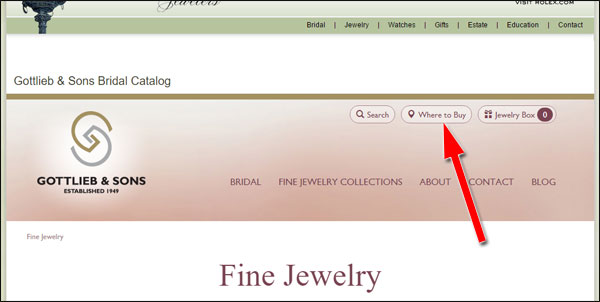
For this week's #ThrowbackThursday, I'm jumping back to April 2012 to the topic of jewelry designer line microsites. Specifically, I need to update my information about <iframes> and how their usage has changed over the 3.5 years since I wrote that original Nugget.
What is an <iframes>?
Iframes are standard HTML tags which allow you to take a website and make them appear within one of your own web pages. Think of it as having a window on your website that looks out to another website.
The original use of an iframe was to make another web page, or perhaps a PDF document, appear on your site without the need for the user to leave your site.
Sometimes this is referred to as having a website "embedded" into your website, which might lead to some confusion since HTML5 now has a specific <embed> tag in addition to the <iframes> tag. The embed tag is commonly used to make external plug-ins or applications function on your web page, most notably a shared YouTube video.
Some <iframes> History
When I wrote this original Nugget 44 months ago, I explained that some jewelry designers were setting up special websites designed to be embedded. These sites only included a product catalog and would easily integrate into most websites without a customer knowing they were, in fact, browsing a different website through a hidden window.
A few loose diamond vendors have created microsites designed to fit perfectly and seamlessly within these iframes. Usually, the microsite has no indication of the diamond vendor's name.
Back in the early 2012 time frame, I knew of several other jewelry manufacturers were also creating microsites specifically for retail jewelers. Again, these microsites were limited to simple product catalogs without any mention of the designer name, how to contact the designer directly, or where the jewelry could be purchased. These microsites fit perfectly within an iframe on any retail jeweler's website with little setup work and, best of all, no ongoing maintenance.
Current State of <iframes> Usage
When using microsites correctly, the iframe can be a time saver for retail jewelers who are building simple websites. However, over the last few years I've found that many retail jewelers are abusing the iframe feature. Specifically, retail jewelers are embedding full designer websites into their own site. You can see a clear example of this in last week's #FridayFlopFix review explaining this image:

Embedding a full website into your own is simple but, well, sloppy. The above Gottlieb & Sons website has a "Where to Buy" button that any customer can use to locate a different jewelry store.
Instead of embedding the full website, you should ask your vendors if they have specific microsites designed for this purpose. If a microsite is not available, then you should not use the full website. The best option is to then add their products to your own website product catalog.
The Zero SEO Impact of <iframes>
Search engine optimization (SEO) is always a hot topic for website owners. Setting your website up correctly will lead to success, while incorrect, or lackadaisical approaches will slow or completely prevent your success.
Honestly, I never recommend the use of iframes on websites. I do understand that they are good for jewelers who might just be starting out with their website and are on a shoestring budget. I also have seen a few microsites that offer functionality that can't be reproduced, like a loose diamond search.
The reason I don't recommend iframe usage is simply because your website will not receive any ranking benefit to having it. Even though your customers might like the microsite functionality, the search engines will ignore those embedded iframe pages.
In other words, even a product catalog of 2,000 items appearing on a microsite, and embedded through an iframe, will not provide any ranking boost from those 2,000 extra pages. You might as well consider those 2,000 pages to be invisible.
On the other hand, if you loaded those 2,000 products into your own product catalog you should see a steady increase in your organic traffic, an increase in the number of pages viewed, and an eventual increase in business. These positive effects should occur as a result of those 2,000 products, 2,000 or more product photos, and 2,000 pages of product details. All of that product content would be a huge boost in your SEO which should create a huge boost in your search ranking.
Conclusions
Although <iframes> can be useful for burgeoning websites, I hope you can now recognize the difference between a valuable microsite and the worthless approach of embedding your jewelry designer's full website.
If positive SEO and business growth are your goal, then you simply need to skip the embedded microsites and add all those products to your own online catalog.








